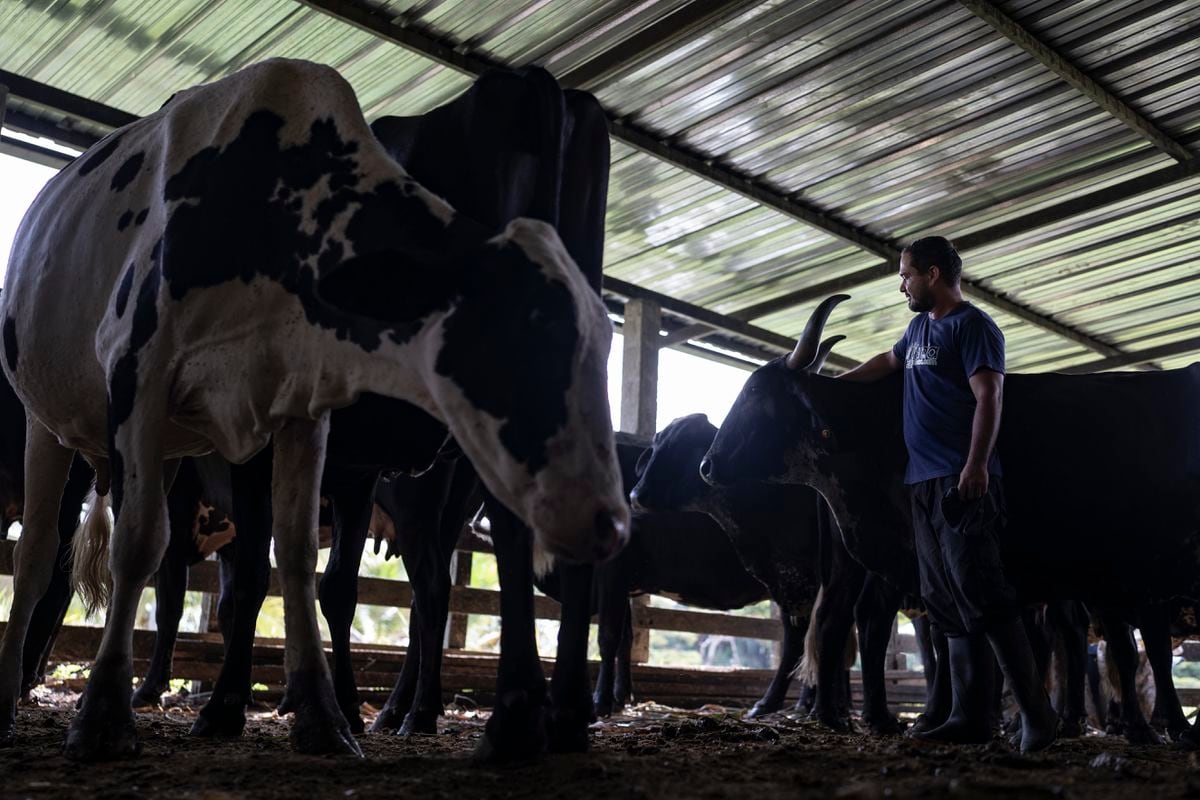An abysmal silence, dim light and the smell of wheat bran reign in this farm in Urcela (Cristiñade, Ponteareas, south of Pontevedra).
Perhaps there would not be so much quiet if the founders of the company had dedicated themselves to the breeding of sea fleas, as they came to talk when they groped possible adventures together.
Then, your cattle would be jumping and would not be content to spend their lives wandering without a compass, entangled between congeners, in their evolution from egg to larva, from larva to pupa, from pupa to imago or beetle, inside a black plastic tray .
The calmest herd on the planet metamorphoses in a matter of three months as they spend their days in 26-degree ambient temperatures, discreetly frolicking on a fluffy bed of bran, which is their staple food.
Under this layer of wheat husk, in the same tray in which a kilo of tan-colored larvae dwell, the guano, the dry, powdery excrement of the insect, is decanted, which has been revealed as a "balanced and ecological" agricultural fertilizer. , with pesticidal and antifungal properties”.
This farm born in Galicia —the country of a million cows— looks more like a laboratory than a corral and is called Galinsect.
It was founded by five childhood friends, from the Vigo neighborhood of As Travesas and the Jesuit School, and its herd is neither larger nor smaller, but tiny: Linnaeus identified it in 1758 as
Tenebrio molitor (
but also known as mealworm), measures three centimeters and is rich in protein, chitin and omega 6.
More information
Why in the coming years we will end up eating insects in Spain
Rubén Recamán, Fernando Castro, Pablo Moure, his cousin Jaime Moure and Pablo Domínguez are a gang from the fifth of 83. The first three studied Business and the last two, Computer Engineering.
And each one had already taken a course in life when these city boys wanted to become ranchers, taking advantage of the two abandoned chicken-raising sheds owned by Fernando's parents in Urcela.
In March 2020, the month in which the pandemic broke out in Spain, they set up the company, reformed the first of the warehouses and in April 2021 they began production.
Your first box of
Tenebrio molitor
Alive they bought it from Bichosa, an online store of insects destined to feed birds, turtles, boas and other exotic pets based in the Pontevedra municipality of O Rosal.
Now Galinsect, which is still in the testing phase, produces tens of tons per month in hundreds of stacked trays that barely take up space.
Reproduction has skyrocketed, especially since a month ago they slightly lowered the ambient temperature and tried a change in diet.
In addition to bran, the Galician tenebrios complete their menu with bagasse from cider and beer, potatoes, vegetables and flour discarded from farms and factories.
Actually, it is known that they are insects with a grateful stomach,
Insect farm in Ponteareas. Rocío Cibes (EL PAÍS)
For now, Galinsect sells its live animals to feed producers who are testing more nutritious formulas for chickens and pigs with tenebrio as a supplement.
Another of the most immediate markets are fish farms.
But friends believe that, just around the corner, the main claimants of the mealworm will be human beings.
"2023 is going to be the year," warns Recamán.
In June 2021, and after receiving a favorable report from the European Food Safety Authority, the European Commission gave the green light to the request that the French firm SAS EAP Group had submitted three years earlier to market in the EU the dried larva of
Tenebrio molitor
as an aperitif or as a component of other prepared products.
The mealworm was thus blessed by Brussels as the first insect for human consumption after the EU regulation on "novel foods" came into force in 2018.
From then on, as stated in the resolution in favor of the French brand, other companies could present their own investigations in this field to obtain their corresponding production and sale authorization.
And in this research phase is Galiinsect, which was born supported by the Business Factory Food company acceleration program, with Nueva Pescanova, the Viña Costeira ribeiro winery and the Laber Corporation as mentors.
Its objective is to be ready for when the insect jumps onto the European plate beyond the daring creations of some posh chefs, producing "with zero waste or greenhouse gas emissions" like other types of livestock.
The farm is researching with the University of Vigo and Feuga (Fundación Empresa-Universidade Galega) a system to separate chitin from protein and polyunsaturated fatty acids by means of an enzymatic process with proteases.
In this way, adult tenebrios could also be commercialized, which at the moment are unappetizing due to that dark exoskeleton,
When the friends founded Galinsect, there were already different initiatives on insects underway in Spain, as is the case of Tebrio, from Salamanca, formerly known as MealFood Europe.
And it was no longer difficult to find energy bars made with flour from other small beings, especially crickets.
Some of these tablets were launched for pets and others were focused on athletes, such as Trillions or its predecessor InsectFit, which triumphed in the market with its motto "good luck!".
Rubén Recamán says that products with tenebrio protein are currently being developed as food for astronauts, and he is convinced that the incorporation of insects into European gastronomy is already unstoppable.
Because although in the pantry of the Spanish the presence of any insect is cause for alarm,
The FAO (Food and Agriculture Organization of the United Nations) has been researching since 2003 the possibilities of the so-called entomophagy to cover the unsustainable demand for protein on the planet.
The international organization already figures that there are around 2,000 million human beings who traditionally eat
bugs
, especially in Asia, Africa and Latin America.
Exclusive content for subscribers
read without limits
subscribe
I'm already a subscriber











